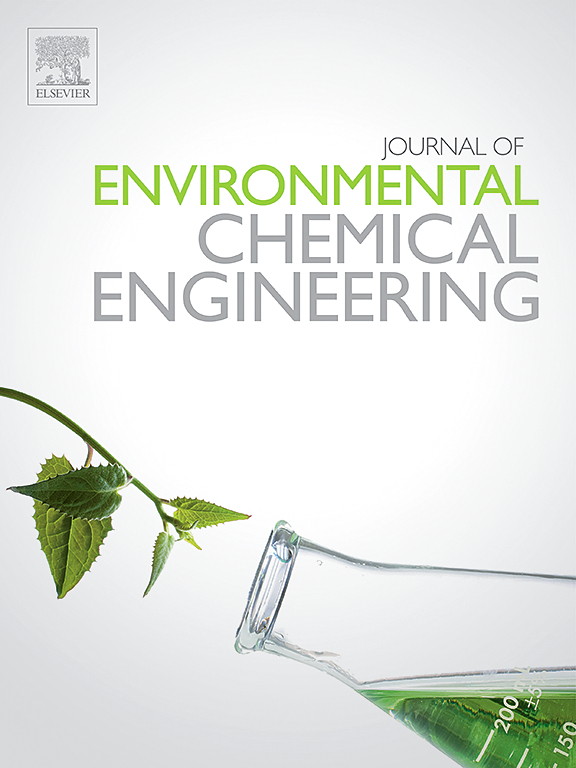Impacts of dibutyl phthalate on the microbial community assembly process in black soil of Northeast China
IF 7.4
2区 工程技术
Q1 ENGINEERING, CHEMICAL
引用次数: 0
Abstract
Dibutyl phthalate (DBP) accumulation threatens soil microbial communities, yet its effects on microbial assembly mechanisms remain unclear. This study investigated the impacts of DBP with a wide range of level (i.e., 0–40 mg kg−1, DBP0, DBP10, DBP20, and DBP40) on microbial community assembly processes in black soil of Northeast China through 90-day controlled laboratory incubations. A framework of infer community assembly mechanisms by phylogenetic bin-based null model analysis (iCAMP) was used to qualify the soil community assembly processes. The findings demonstrated significant reductions in soil enzyme activities (urease, β-glucosidase) and respiration intensity with elevated DBP concentrations. Microbial α-diversity declined significantly, with Shannon and Chao1 indices decreased by 1.79 % and 4.78 % for DBP10, 5.29 % and 9.70 % for DBP20, 14.66 % and 10.22 % for DBP40, respectively. The abundance of bacteria linked to soil carbon and nitrogen cycling exhibited reduction, such as Nocardioides (decreased from 1.24 % to 0.52 %) and Gp6 (decreased from 5.65 % to 3.67 %). Conversely, the relative abundances of bacteria which are associated with DBP degradation increased, such as Streptomyces (Increased from 20.21 % to 34.01 %) and Bacillus (Increased from 2.49 % to 5.21 %). DBP significantly altered microbial community assembly processes. As DBP concentration increased, the relative importance of homogeneous selection rose from 45.41 % to 55.63 %, while dispersal limitation declined from 48.89 % to 35.09 %. DBP homogenizes environmental conditions and a transition from neutral diffusion dynamics to pressure-driven selection, favoring taxa adapted to DBP degradation. This study advances understanding of DBP’s ecological impacts on soil microbial communities and their assembly dynamics.
邻苯二甲酸二丁酯对东北黑土微生物群落聚集过程的影响
邻苯二甲酸二丁酯(DBP)的积累威胁土壤微生物群落,但其对微生物组装机制的影响尚不清楚。本研究通过90天的实验室对照培养,研究了不同浓度DBP(0-40 mg kg−1,DBP0, DBP10, DBP20和DBP40)对东北黑土微生物群落组装过程的影响。采用基于系统发育键的零模型分析(iCAMP)框架推断群落组装机制,对土壤群落组装过程进行定性。结果表明,随着DBP浓度的升高,土壤酶活性(脲酶、β-葡萄糖苷酶)和呼吸强度显著降低。微生物α多样性显著下降,其中DBP10的Shannon和Chao1指数分别下降1.79 %和4.78 %,DBP20的Shannon和Chao1指数分别下降5.29 %和9.70 %,DBP40的DBP40分别下降14.66 %和10.22 %。与土壤碳氮循环相关的细菌丰度下降,如Nocardioides(从1.24 %下降到0.52 %)和Gp6(从5.65 %下降到3.67 %)。相反,与DBP降解相关的细菌的相对丰度增加,如链霉菌(从20.21 %增加到34.01 %)和芽孢杆菌(从2.49 %增加到5.21 %)。DBP显著改变了微生物群落的组装过程。随着DBP浓度的增加,同质选择的相对重要性从45.41 %上升到55.63 %,分散限制从48.89 %下降到35.09 %。DBP使环境条件均匀化,从中性扩散动力学向压力驱动选择过渡,有利于适应DBP降解的类群。本研究促进了对DBP对土壤微生物群落及其组装动态的生态影响的认识。
本文章由计算机程序翻译,如有差异,请以英文原文为准。
求助全文
约1分钟内获得全文
求助全文
来源期刊

Journal of Environmental Chemical Engineering
Environmental Science-Pollution
CiteScore
11.40
自引率
6.50%
发文量
2017
审稿时长
27 days
期刊介绍:
The Journal of Environmental Chemical Engineering (JECE) serves as a platform for the dissemination of original and innovative research focusing on the advancement of environmentally-friendly, sustainable technologies. JECE emphasizes the transition towards a carbon-neutral circular economy and a self-sufficient bio-based economy. Topics covered include soil, water, wastewater, and air decontamination; pollution monitoring, prevention, and control; advanced analytics, sensors, impact and risk assessment methodologies in environmental chemical engineering; resource recovery (water, nutrients, materials, energy); industrial ecology; valorization of waste streams; waste management (including e-waste); climate-water-energy-food nexus; novel materials for environmental, chemical, and energy applications; sustainability and environmental safety; water digitalization, water data science, and machine learning; process integration and intensification; recent developments in green chemistry for synthesis, catalysis, and energy; and original research on contaminants of emerging concern, persistent chemicals, and priority substances, including microplastics, nanoplastics, nanomaterials, micropollutants, antimicrobial resistance genes, and emerging pathogens (viruses, bacteria, parasites) of environmental significance.
 求助内容:
求助内容: 应助结果提醒方式:
应助结果提醒方式:


